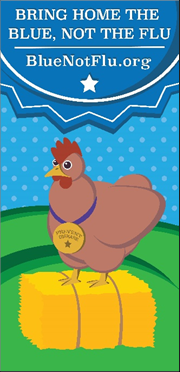What to know
CDC works with partners in all sectors to build a competent public health workforce. Here are some examples of what it looks like to partner with CDC.
Federal Partnerships and Initiatives
CDC works with other federal agencies to fund and support the research and application of STEM for public health. Some examples include:
National Science Foundation (NSF): CDC's National Institute for Occupational Safety and Health (NIOSH) partners with NSF. They make funding available to study the use of robotics in the workplace.
NASA: This partnership extends back to 1964. NASA asked CDC to help ensure that germs from Earth do not get transported into space. More recently, CDC experts consulted with NASA astronauts about how COVID-19 impacted life on the International Space Station. CDC's National Environmental Public Health Tracking program collaborates with NASA. They research the health effects of environmental hazards and environmental health disparities.
Academic Partnerships
CDC partners with academic institutions and networks to support STEM education. Some examples include:
High Schools: CDC Museum helped a high school in Georgia start a public health concentration and internship for its students.
Colleges and Universities: These partnerships offer a chance to apply technological and engineering design methods to real-world public health problems. For example, CDC's Division of Healthcare Quality and Promotion's partnership with the Prevention Epicenters Program. The program allows academic leaders in healthcare epidemiology to work together with CDC to conduct prevention research.
Academic partnerships: Partners produce tools with immediate public health applications. For example, CDC teamed up with the Georgia Tech Research Institute to create dashboards for the COVID Data Tracker. CDC's Division of Population Health also funds the Prevention Research Centers. This network of 26 schools develops, tests, and evaluates public health interventions, especially in underserved communities.
Networks: These partnerships help create alliances. For example, Academic Partnerships to Improve Health creates alliances among CDC and academic associations. These partnerships focus on aligning academic approaches and field experience with current public health priorities. It strengthens the links between academic and public health practice.
Multisectoral Partnerships
The complex problems that public health aims to solve often require expertise from professionals in a variety of fields and disciplines. Here are two examples of CDC programs that engage partners from multiple sectors.
ORISE: The Oak Ridge Institute for Science and Education (ORISE) Research Participation Program is an agreement between CDC and the U.S. Department of Energy. It provides college and university faculty, students, and post-graduates with hands-on research activities. ORISE fellows enhance their knowledge and skills in science, math, and engineering.
Youth in Ag: CDC helped establish the Influenza and Zoonoses Education Among Youth in Agriculture (Ag) program. This is with the US Department of Agriculture (USDA), the Council of State and Territorial Epidemiologists, and state health departments. This One Health collaboration is designed to educate youth and their communities about zoonotic infections and prevention behaviors. Through the program, human and animal health, and agricultural communities work together to promote effective disease prevention and preparedness.

STEM Partnerships
CDC works with organizations that support STEM education. For example:
National Science Olympiad (NSO): Since 1998, CDC's Science Ambassador Program has partnered with NSO to offer the Disease Detectives event. Science Olympiad is a team-based STEM challenge for 6,000+ grade 6-12 student teams, with 425 tournaments in all 50 states. As of one 23 events, students learn epidemiology and public health during school clubs and afterschool programs. Then, the compete against other schools.
